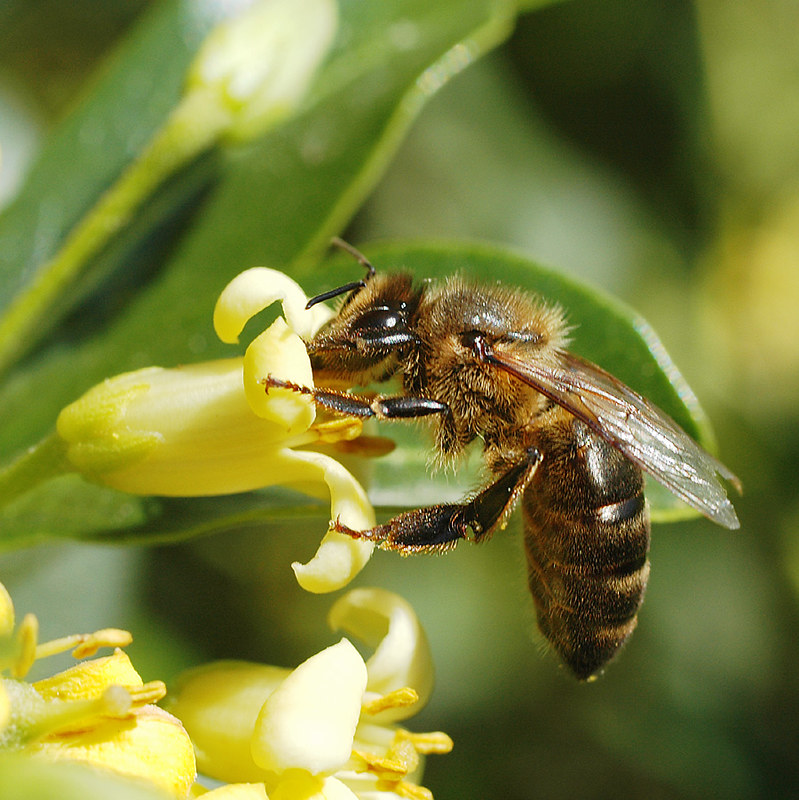Comment le miel est-il produit ?
Un bref résumé de l'apiculture et des abeilles, ainsi que de leurs rôles respectifs dans le cycle de la nature.

La symbiose des apiculteurs et de leurs abeilles.
Les abeilles et les apiculteurs entretiennent une relation mutuellement bénéfique. L'apiculteur fournit à la colonie d'abeilles un habitat à l'abri des nuisibles et traité contre les parasites et les maladies. Ils assurent la prospérité des ruches en déplaçant les colonies vers de nouveaux lieux de butinage en fonction de la progression florale des saisons, en s'assurant que la reine des abeilles est suffisamment forte pour continuer à produire un nombre suffisant d'ouvrières pour répondre aux besoins de la ruche et faire passer la colonie pendant les périodes les plus difficiles de l'année où le fourrage peut être rare ou difficile à trouver.
En échange, l'abeille produit du miel. Celui-ci peut être obtenu à partir de deux sources : le nectar des fleurs ou le miellat.
Pollinisation.
Une symbiose existe aussi entre la fleur et l'abeille, la fleur produit une sécrétion sucrée appelée nectar que l'abeille collecte, ce faisant elle pollinise la fleur, c'est-à-dire le transfert des grains de pollen des fleurs mâles aux fleurs femelles permettant la reproduction.
La transformation du nectar (ou miellat) en miel.
L'abeille collecte le nectar et le restitue à la ruche, par un processus de régurgitation, de déshydratation et de réaction du nectar avec des enzymes présents dans le corps de l'abeille. Le nectar est transformé en miel et stocké dans des formations de cire d'abeille spécialement préparées, appelées rayons de miel. Un processus similaire se produit avec la collecte du miellat, bien qu'au lieu d'être un sous-produit végétal, le miellat se trouve dans les sécrétions des pucerons lorsqu'ils se nourrissent de sève.


-Miel sur une feuille -Une abeille récolte du nectar
Ce miel est extrait des rayons par l'apiculteur, séparé de la cire d'abeille et placé dans des pots pour la consommation humaine.


